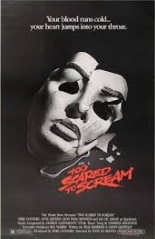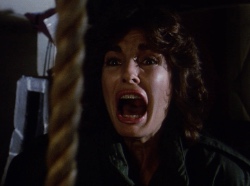
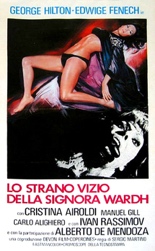 None other than Sigmund Freud kicks off The Strange Vice of Mrs. Wardh via a quote that seems to chastise the audience for its bloodlust — a potentially hypocrtical move for a giallo, if shame were the intended response. Regardless, no record exists of Freud’s thoughts on Edwige Fenech (The Case of the Bloody Iris), but I’d like to think he would have altered his famous line about the cigar.
None other than Sigmund Freud kicks off The Strange Vice of Mrs. Wardh via a quote that seems to chastise the audience for its bloodlust — a potentially hypocrtical move for a giallo, if shame were the intended response. Regardless, no record exists of Freud’s thoughts on Edwige Fenech (The Case of the Bloody Iris), but I’d like to think he would have altered his famous line about the cigar.
In the title role, Fenech’s Julie and her tapioca husband (Alberto de Mendoza, A Lizard in Woman’s Skin) return home to Austria from time abroad. No sooner do they step foot in Vienna than the bra-neglecting Julie has an unpleasant encounter with a shit-grinning ex (Ivan Rassimov, The Eerie Midnight Horror Show), followed by a pleasant meet-cute with her pal’s handsome cousin (George Hilton, My Dear Killer). A full-blown affair ensues.
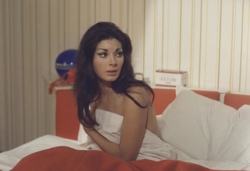 All the while, this being a giallo, beautiful women are killed all over the city by a man whose black-gloved hands clutch — what else? — a sharp, shiny straight razor. Julie becomes his next intended victim, so suspicion falls on each of these three men in her mixed-up, sexed-up life.
All the while, this being a giallo, beautiful women are killed all over the city by a man whose black-gloved hands clutch — what else? — a sharp, shiny straight razor. Julie becomes his next intended victim, so suspicion falls on each of these three men in her mixed-up, sexed-up life.
And it is just that, whether Julie dreams of having intercourse atop broken glass (if only in dreams) or attending parties in which the female guests rip one another’s paper dresses off. Such swinging shenanigans and their settings contribute to the overall hallucinatory effect of the visuals, as intoxicating as Fenech’s beauty is flawless. This being the first giallo for Sergio Martino (Torso), it’s rather remarkable how right he got it, right out of the gate. Suspense is high, notably in a near-silent sequence of searching by candlelight, and audiences are left guessing and second-guessing, right up to the denouement. By then, The Strange Vice of Mrs. Wardh has done more than enough work to earn its reputation. —Rod Lott


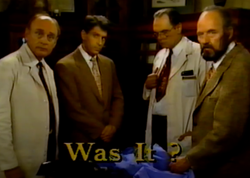
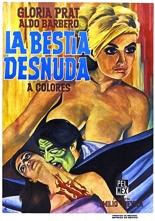
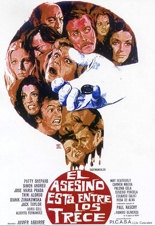 Two years after her spouse’s suspicious death, Lisa Mandel (Patty Shepard,
Two years after her spouse’s suspicious death, Lisa Mandel (Patty Shepard, 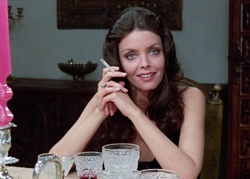 Featuring Paul Naschy in a small role as part of Mrs. Mandel’s help, The Killer Is One of Thirteen comes from Javier Aguirre in the same productive year he and Naschy collaborated on
Featuring Paul Naschy in a small role as part of Mrs. Mandel’s help, The Killer Is One of Thirteen comes from Javier Aguirre in the same productive year he and Naschy collaborated on 